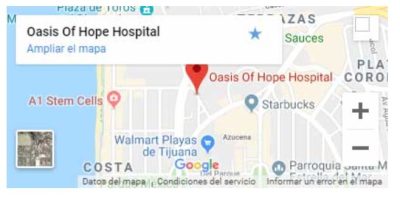Insulin Potentiation Therapy (IPT), also known as low dose chemotherapy, is one of the safest and most innovative approaches to treating cancer. It is a kinder, gentler way to fight cancer effectively, including particularly aggressive cancers such as lung cancer and colon cancer, but is also effective on a wide variety of cancer types. This alternative treatment has almost none of the side effects such as nausea, radical hair loss, liver damage, and DNA distortion that we see routinely with standard chemotherapy. The key to IPT as a cancer cure is the body’s own hormone – insulin.
Insulin manages the delivery of glucose across cell membranes into the cells. Cancer cells have 10-20 times more insulin receptors on their surface than normal cells. When insulin is released into the bloodstream by the pancreas in response to a meal, the insulin attaches to these receptors on the surface of the cell and, like a key fitting into a lock, opens channels in the cell wall to allow nutrients to go into the cell. Because cancer cells have more of these receptors, they compete for food better than normal cells. In this way, cancer cells thrive and normal cells are compromised.
Sugar – The Sweet Spot for Cancer
You may have heard the expression, “sugar feeds cancer.” Indeed it does. Yet at the same time, sugar is the Achilles heel of cancer.
PET scans for example find cancer by looking at the sugar uptake. The radioactive agent is mixed with sugar water and, because cancer cells take up much more sugar than normal cells, the radioactive agent congregates in the cancer cells. The resulting picture will indicate enhanced uptake and a mass where the cancer is.
We use that extreme need for sugar to our advantage with IPT when treating cancer. But instead of using a radioactive agent along with the sugar, we use chemotherapy. And we open the cellular membranes for significantly better absorption.
In IPT, we administer insulin to trigger a drop in the patient’s blood sugar level. Healthy cells shift over to fat metabolism, but cancer cells rely almost entirely on sugar metabolism, so they go into an emergency mode and open all of their membranes in an effort to get the sugar they so desperately need. We have the cancer cells now in a very vulnerable position.
At this point, we administer a small amount of chemotherapy followed quickly by glucose (sugar). The cancer cells, in their desperate effort to get the glucose, take in almost the entire dose of chemotherapy drugs as well. The drugs poison and eventually kill the cancer cells.
How small a dose of drugs do we use? About one-tenth the amount of standard chemotherapy. That is why IPT is also known as low dose chemotherapy.
This method allows us to target the cytotoxic drugs directly to the cancer cell. There is little chemo left over to cause a toxic reaction within healthy cells. Patients who treat cancer with IPT have far fewer side effects.
In standard chemotherapy, insulin is not used to open the cells. Patients must be given a large dose of drugs so that enough will be absorbed by the cells to do the job. The majority of the drugs are not taken up by the cancer cells; the massive dosage wreaks havoc to healthy cells and blood components. Standard chemotherapy does not target cancer cells. The immune system takes a beating and patients experience many unpleasant side effects.
Insulin’s Ability to Potentiate
The word “potentiate” means that one substance – insulin – enhances the effectiveness of another substance – chemotherapy – and thus far less drugs are needed.
Simply put, IPT consists of a pulse of hypoglycemia (low blood sugar) that improves the effectiveness of therapeutic drugs and supports health:
- IPT makes cell membranes more permeable, increasing the uptake of drugs into cells.
- IPT can help transport drugs across the blood-brain barrier.
- Insulin, in addition to its ability to help deliver higher-levels of the chemotherapy drugs into the cancer cells, also causes these cells to go into their growth phase where they actually become more vulnerable to the chemotherapy drugs. The cells are hit harder and at a time when they are most vulnerable to the assault, thus maximizing results.
- A 1981 study conducted at George Washington University showed that the chemo drug, methotrexate, when used with insulin, increased the drug’s cell-killing effect by a factor of 10,000.
- Insulin assists debilitated cancer patients with appetite and metabolism, helping to mitigate the wasting – cachexia – that accompanies the disease and its therapy.
- IPT also may change the blood chemistry for the better. Dr. Perez Garcia studied this effect during IPT treatments and spoke of changes in the “biological terrane” of the body making it less hospitable to disease. He felt these changes persisted long after the treatment was over.
- IPT is believed to help detoxify. When the cell doors are open, things go in – and out. While IPT kills cancer cells, it flushes toxins into the circulation, enabling them to leave the body. This is why we pay special attention to supporting the liver during IPT.
- IPT’s innovative approach was developed in the 1920s as an alternative to treating syphilis with almost lethal doses of mercury and arsenic. IPT was first used for cancer in 1945.





